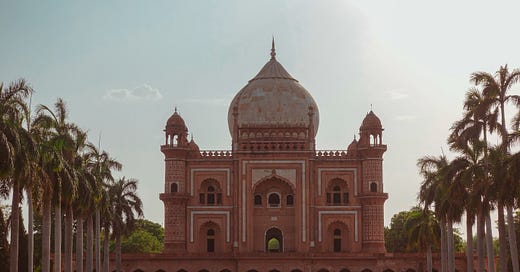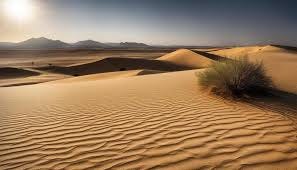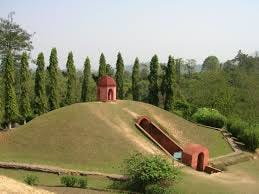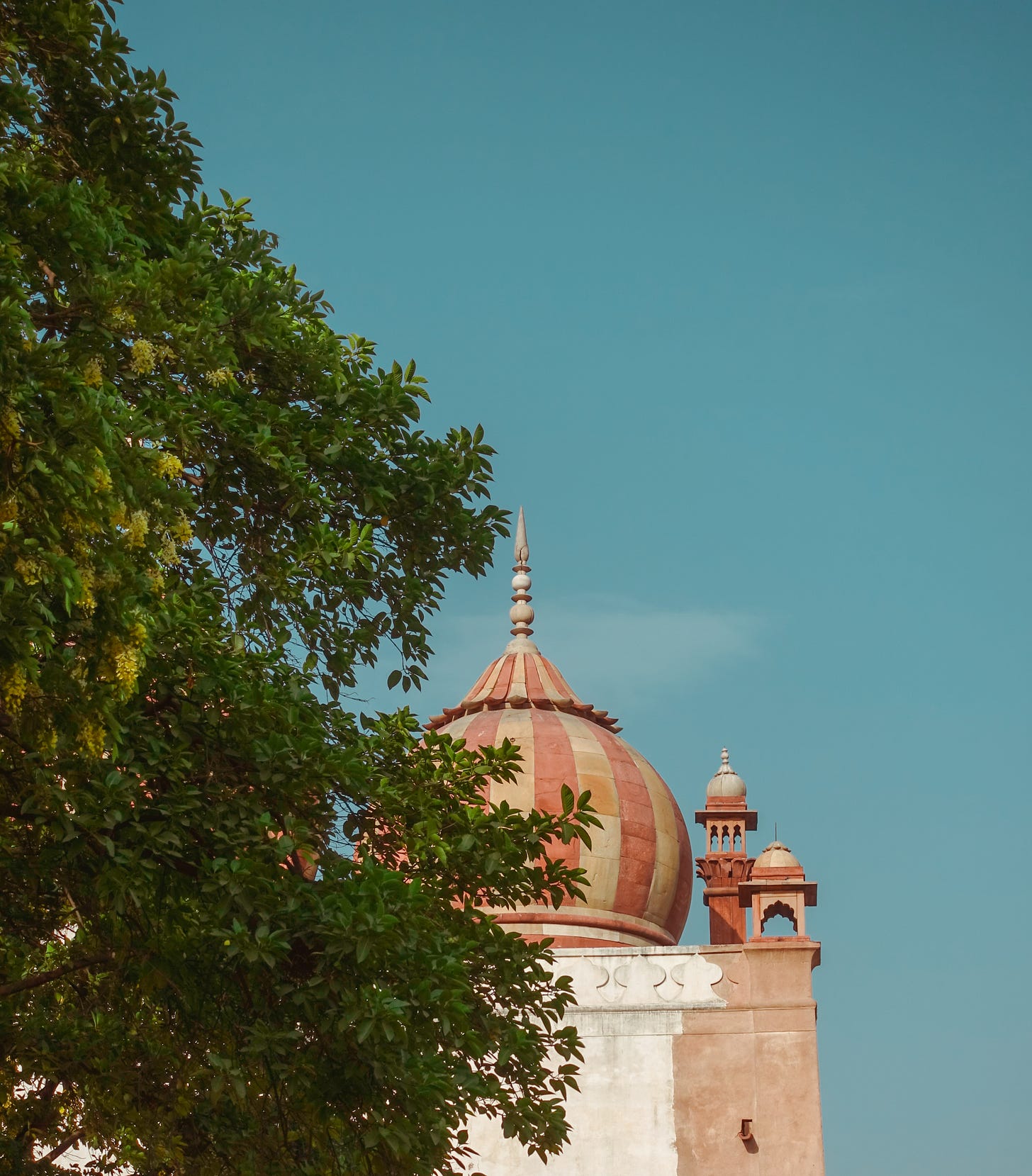A newsletter recommending good examples of storytelling across:
3 Trivia
2 Fun Facts, and
1 Photograph.
Let's dive in…
Trivia’s:
1. Geography:
This natural phenomenon occurs in one of the driest and smallest deserts in the United States, the Mojave Desert. Known for its iconic Joshua Trees and extreme temperatures, this desert is home to a mysterious sound that can be heard when wind or movement causes the sand dunes to vibrate. This rare sound, often described as a hum, whistle, or even a boom, has earned these dunes a nickname that reflects their musical nature.
What is this phenomenon called, which shares its name with a feature often found in coastal areas as well? (two worded and alliterative)
2. Art:
In the late 1960s, The Beatles founded a multimedia corporation named Apple Corps, a name that punned on a fruit. This fruit also served as a motif in several works by a famous Belgian surrealist painter. One of the painter’s 1966 works, owned by Paul McCartney, played a role in inspiring the name of the Beatles' company, known for its music, film, and electronics divisions. The painter is renowned for his thought-provoking works that often juxtapose ordinary objects in unusual contexts.
What is the name of this famous painting?
3. General:
Bajaj Auto has recently launched its flagship 400cc motorcycle, the Pulsar NS400Z, and has launched a new campaign to promote it. This campaign aims to inspire riders to embrace their true selves, take bold risks, and defy societal norms. It represents a shift from the brand's previous ‘__________(10) Male’ platform to a more contemporary and individualistic approach.
What is the name of this new campaign, and how does the latest ad for this campaign differ from previous advertisements?
Fun Facts:
The Atacama Desert in Chile holds the title of the driest warm desert on Earth, with certain spots not seeing rain for more than 400 years! This extreme desert is so barren and harsh that even the hardiest plants and animals struggle to survive. The landscape, with its vast salt flats, rocky terrains, and parched soil, is often compared to the surface of Mars. In fact, it's so similar that NASA uses the Atacama as a training ground for its Mars missions, testing rovers and life-detection tools in this otherworldly environment. If you ever wondered what it's like to walk on another planet, the Atacama Desert might just be the closest experience here on Earth!
The ancient 'Moidams' of Assam, which are the royal burial mounds of the Ahom dynasty, have been proposed for inclusion in the UNESCO World Heritage Sites list! These mound-like structures, dating back to the 13th-19th centuries, served as the final resting place for Ahom royalty in Assam’s Charaideo district. Comparable to the royal tombs of ancient China and the Egyptian Pyramids, the Moidams are now being considered for global recognition at the 46th session of the World Heritage Committee, set to be hosted in New Delhi in July 2024.
Photograph of the Day:
Tomb of Safdar Jang:
Safdarjung's Tomb is a sandstone and marble mausoleum in Delhi, built in 1754 in the late Mughal Empire style for Nawab Safdarjung, the Nawab of Oudh (Awadh) and prime minister of the Mughal Empire under Emperor Ahmed Shah Bahadur. Safdarjung was appointed prime minister (Vazir ul-Mamalk-i-Hindustan) when Ahmed Shah ascended the throne in 1748, at a time when the Mughal Empire's control was limited to North India.
The tomb, set in a garden, reflects the late Mughal style, similar to earlier imperial tombs like the Taj Mahal, featuring an "eight paradises" layout with eight rooms surrounding the main chamber under the dome, and a garden divided into four parts. This tomb, the first built by someone outside the Mughal royal family, symbolized the diminished power of the emperors by this period.
Safdarjung, born Mirza Muqim Abul Mansur Khan, was a wealthy and influential ruler of Awadh during Muhammad Shah’s reign. Following the emperor's death, Safdarjung moved to Delhi. As prime minister, he consolidated all power, as Ahmed Shah was a figurehead ruler, indulging in pleasures. Safdarjung’s dominance became so oppressive that the emperor sought help from the Marathas, who expelled Safdarjung from Delhi in 1753. He died in 1754.
After his death, his son Nawab Shujaud Daula sought permission from the Mughal emperor to build a tomb for his father in Delhi. The tomb, designed by an Abyssinian architect and constructed by Bilal Muhammad Khan at the cost of three lakh rupees, used slabs from the tomb of Abdul Rahim Khankhana. Safdarjung's Tomb is considered the last grand garden tomb of the Mughal era, modeled after Humayun's Tomb, and was completed in 1754.
In case if you have missed my previous newsletters here are the links to them…
give it a click
Could you help me get there by sharing my newsletter with a friend? Your support means a lot to me.
Here’s the link to the publication: https://bhumi64.substack.com
Thank you so much!
Answers:
Singing Sand
Bajaj Auto launches the Pulsar NS400Z and highlights female riders in its latest ad.
You can know more about the topics (underlined words) by clicking on them.










